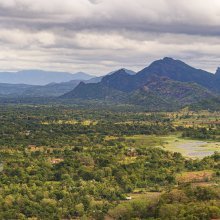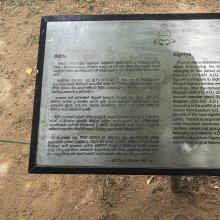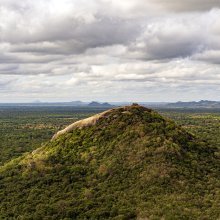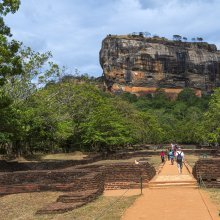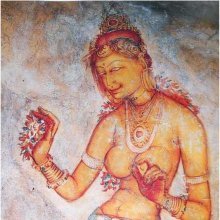Sigiriya, Sīgiriya: 1 definition
Introduction:
Sigiriya means something in the history of ancient India. If you want to know the exact meaning, history, etymology or English translation of this term then check out the descriptions on this page. Add your comment or reference to a book if you want to contribute to this summary article.
Images (photo gallery)
(+32 more images available)
India history and geography
Source: Wikipedia: India HistorySigiriya (or Sinhagiri) (lit. “Lion Rock”) functioned as an ancient Buddhist monastery dating dating to the 3rd century BCE and is therefore a site of historical and archaeological significance. Sigiriya is an ancient rock fortress located in the northern Matale District near the town of Dambulla in the Central Province, Sri Lanka. According to the ancient Sri Lankan chronicle the Culavamsa, this area was a large forest, then after storms and landslides it became a hill and was selected by King Kashyapa (AD 477–495) for his new capital. He built his palace on top of this rock and decorated its sides with colourful frescoes. On a small plateau about halfway up the side of this rock he built a gateway in the form of an enormous lion. The name of this place is derived from this structure; Simhagiri, the Lion Rock.
Sigiriya is also known by the name Sinhagiri (lit. “Lion Rock”); in Sinhala: සීගිරිය (sīgiriya), Tamil: சிகிரியா (cikiriyā) / சிங்ககிரி (ciṅkakiri/singagiri).

The history of India traces the identification of countries, villages, towns and other regions of India, as well as mythology, zoology, royal dynasties, rulers, tribes, local festivities and traditions and regional languages. Ancient India enjoyed religious freedom and encourages the path of Dharma, a concept common to Buddhism, Hinduism, and Jainism.
See also (Relevant definitions)
Full-text: Simhagiri, Minneriya, Duratissa, Duratissakavapi.
Relevant text
Search found 3 books and stories containing Sigiriya, Sīgiriya; (plurals include: Sigiriyas, Sīgiriyas). You can also click to the full overview containing English textual excerpts. Below are direct links for the most relevant articles:
Amaravati Art in the Context of Andhra Archaeology (by Sreyashi Ray chowdhuri)
Artistic Connectivity between Amarāvatī and Sri Lanka < [Chapter 5 - Impact of Amarāvatī Art]
A Short history of Lanka (by Humphry William Codrington)
Indian Culture in South-East Asian Countries < [July – September 1973]
The Cultural Revival under the Guptas < [March-April 1933]
